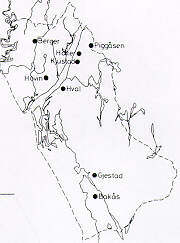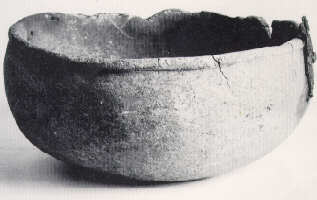
Class 4c 1996-97
Hovinhøgda Elementary School
Yes, because iron was expensive and in this area clay pottery was rare so the production of soapstone vessels was important for the households. There was a lively trade in such vessels. It seems that soapstone was considered to be a valuable commodity because these quarries were often referred to as 'silver mines'.
Farmers living in the area worked there part-time. Perhaps there were also some full-time specialists working there throughout the summer months.
Several sinkers and weights for fishing lines and nets, casting moulds, loom weights, scoops and ladles, spindle whorls and some unfinished cooking vessels. They may have become too dry to work with and had to be thrown away. The Vikings brought items made of soapstone along wherever they went.
 We have
included a photo of a sospstone pot found at Gjestad, a farm here in Fet.
We have
included a photo of a sospstone pot found at Gjestad, a farm here in Fet.
We would have liked to visit the quarry but, because of the danger of landslides,
it is not safe to go there. The mine shafts are also partly collapsed. We
hope the quarry will be restored so we can see it later.
Soapstone from a different quarry from the one at Piggåsen is used to renovate statues at the Nidarosdomen in Trondheim.
Updated June 10, 1997 - The Viking Network